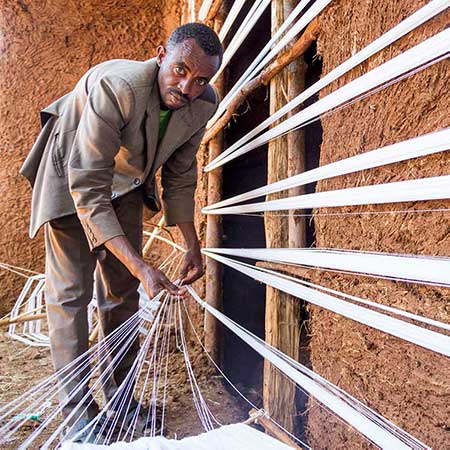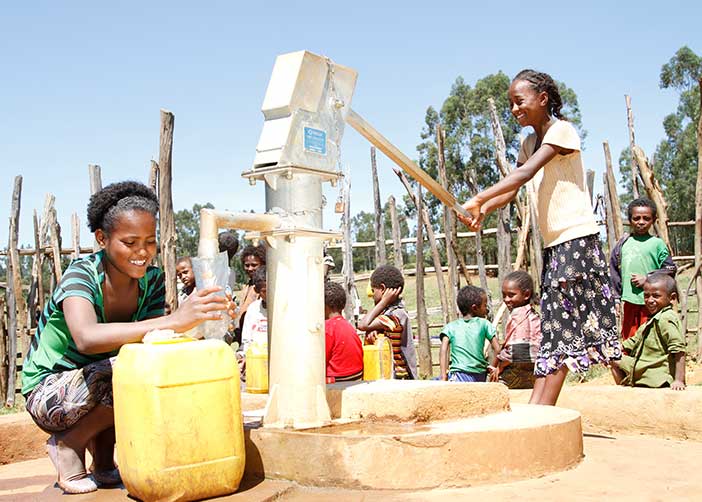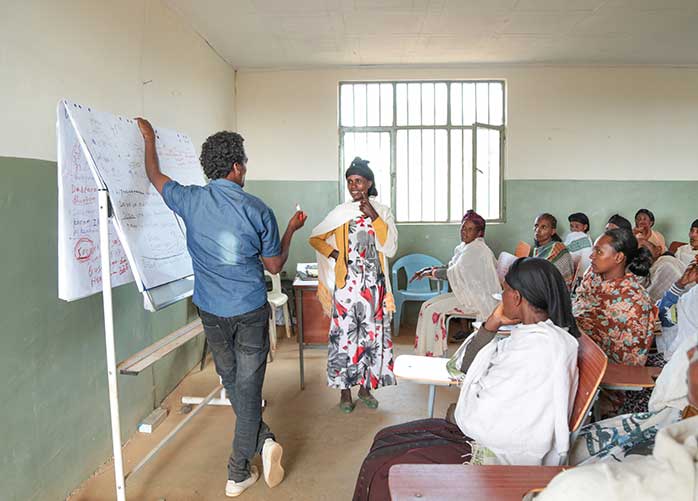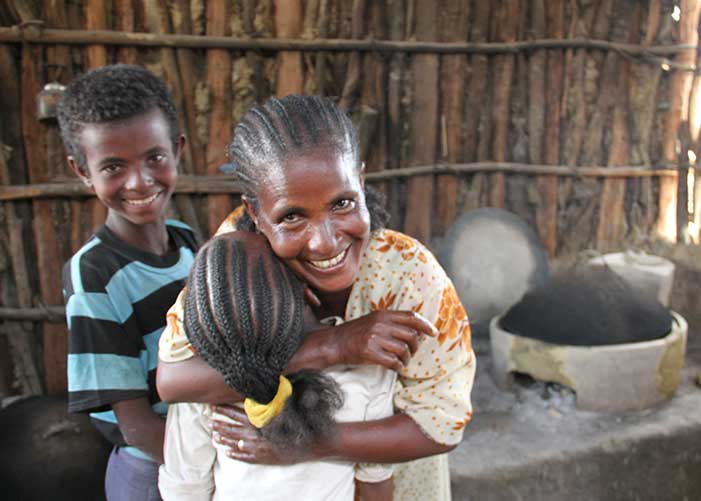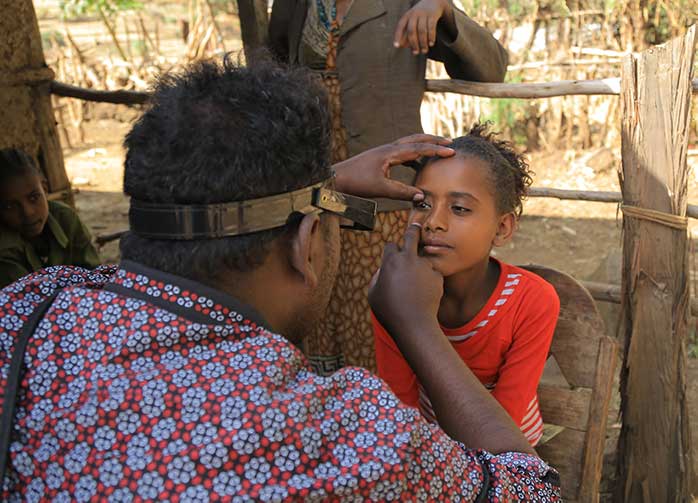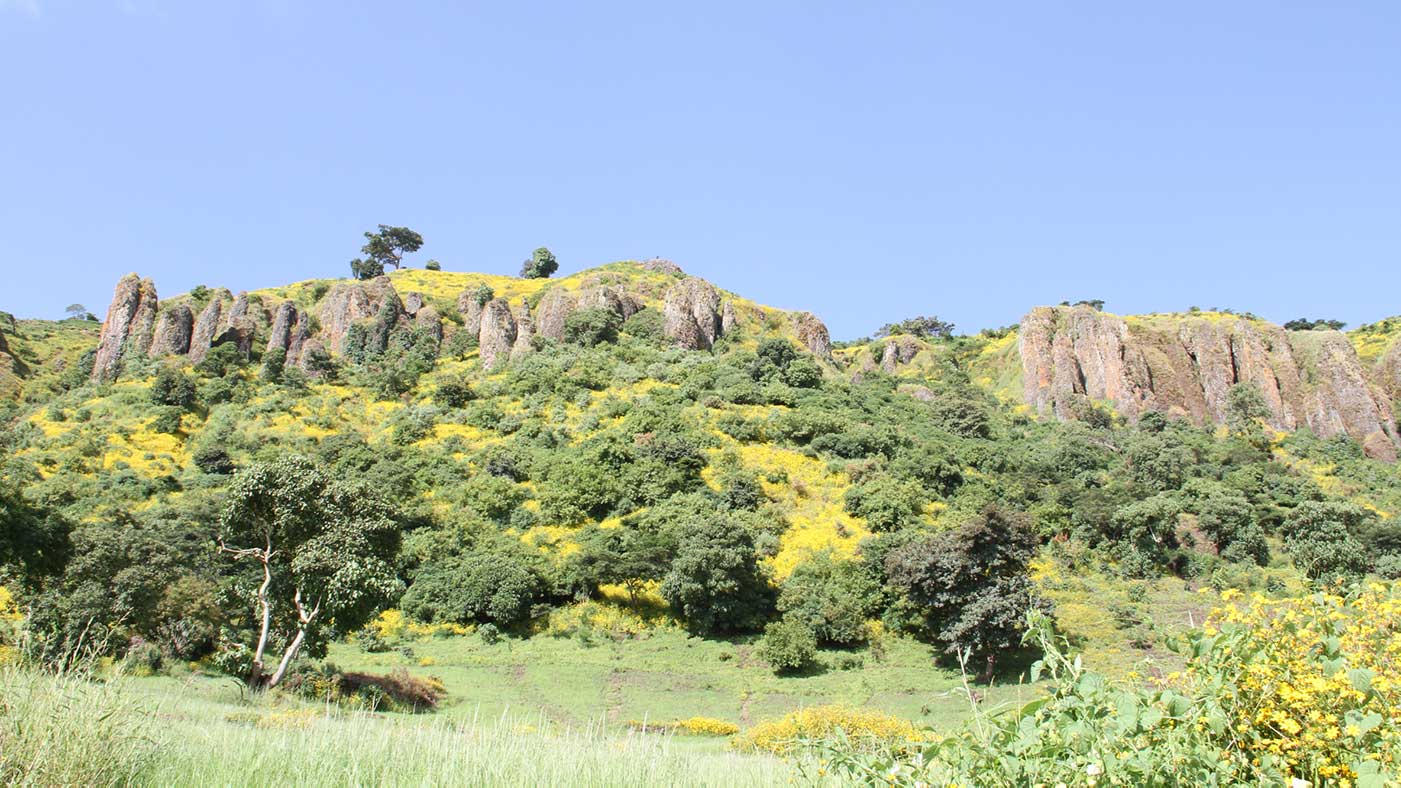
Abune Ginde Beret
Long-term capacity building for 140,000 people.
Since the beginning of 2012, Abune Ginde Beret has been one of the project regions where the work is entirely financed by Menschen für Menschen Austria and implemented in collaboration with colleagues in Ethiopia who work hand in hand with the population.
In Abune Ginde Beret the security situation is tense due to the activities of insurgent groups. In order to protect our employees, we have restricted or paused our work in these regions and some of our employees are being deployed in other project regions. As soon as the situation allows, we will continue our activities as normal. (Status 9/2023)
Titel

2012

2 (as of 12/2024)

1,360 km²

approx. 140,000

Bake Kelate

about 170 km northwest of Addis Ababa in the West Shewa zone. Between 1,000 and 2,500 meters above sea level.

Berhanu Bedassa
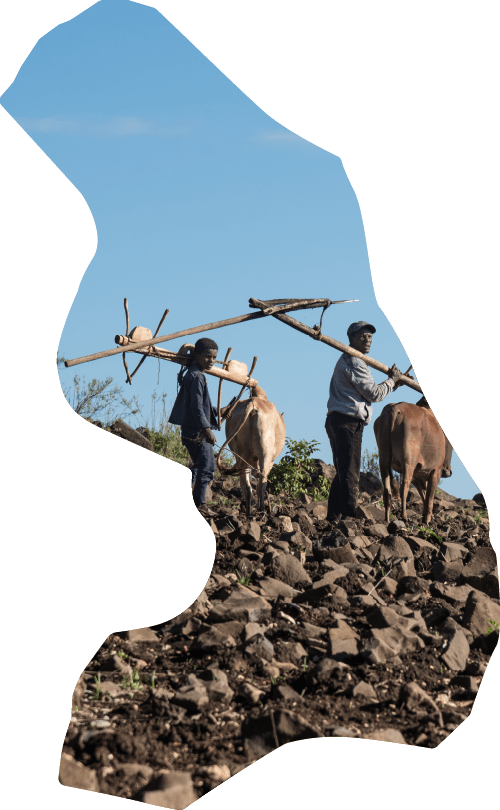
Challenges at the beginning of our work in Abune Ginde Beret in 2012
As in many rural regions of Ethiopia, the majority of the population in Abune Ginde Beret lives from the yield fields that are often far too small. When we started working in the region in 2012, crop yields were far too low for most families. Progressive soil erosion, unreliable rainfall and ever decreasing soil fertility posed great challenges to the people. Other major problems in the region were the lack of access to clean drinking water, plus poor medical care. As in the neighboring region of Ginde Beret, the eye infection trachoma was widespread in Abune Ginde Beret.

80 % of the people did not have clean drinking water.
At the beginning of our work in 2012, 4 out of 5 people did not have access to clean drinking water.

50 % of children under the age of 10 years were affected by trachoma.
Bacterial eye inflammation can lead to painful blindness if left untreated.

74 % of households used kerosene as a light source.
Three-quarters of households used kerosene as an evening light source. Only 2 % used electricity.


What we’re doing in Abune Ginde Beret
Based on the principle of capacity building, the Ethiopian employees of Menschen für Menschen have been implementing a variety of initiatives in the areas of agriculture, water, education, health, and income since 2012.
Project work is always implemented hand in hand with the population. Families actively participate in the initiatives, and completed projects are gradually handed over to the responsibility of the population and local authorities. In this way, an important foundation for further development is created and the entire region becomes independent of external aid in the long term. In Abune Ginde Beret, we also benefit from the experience already gained in the neighboring region of Ginde Beret.
Project work is always implemented hand in hand with the population. Families actively participate in the initiatives, and completed projects are gradually handed over to the responsibility of the population and local authorities. In this way, an important foundation for further development is created and the entire region becomes independent of external aid in the long term. In Abune Ginde Beret, we also benefit from the experience already gained in the neighboring region of Ginde Beret.
Project report (excerpt)
Beyond the initiatives indicated here, further activities in the fields of agriculture, water, education, health and income will be implemented in order to create a good basis for the sustainable development of the Abune Ginde Beret region.
Status of the evaluation unless otherwise specified: 6/30/2022
Status of the evaluation unless otherwise specified: 6/30/2022

98 Nurseries established
The nurseries grow trees, grasses and shrubs for reforestation, as well as fruit tree saplings for families. The nurseries are later transferred to the responsibility of the population or local authorities.

695 Hectares of land reforested
The saplings from the nurseries are planted in fenced areas in collaboration with the population. The village community takes care of the maintenance and protection of the reforestation areas.

126 Hand pump wells and spring catchments constructed
Wells and spring catchments are built near the villages. Clean, healthy drinking water sustainably improves people's health and saves them a lot of time collecting water.

17 Schools built
Schools supplied by Menschen für Menschen are built according to a proven principle that is characterized by a particularly robust construction. The schools can then provide a clean, bright place to learn for learning for decades to come.

2,706 Sight-saving operations performed
The main causes of blindness in rural areas are cataracts and trichiasis. The latter can be avoided simply through more hygienic living conditions. In the final stage, however, only surgery protects against blindness.

2,380 Women participated in the microcredit program
Microcredits often give women their first opportunity to earn an income on their own. The credit groups operate independently, and the entire region benefits from economic development in the long term.
The people behind the numbers: our success is measurable and changing lives.
To make our work's success verifiable, it's not just about the numbers and data, but first and foremost about the people. The following stories tell of the big and small successes achieved at Abune Ginde Beret.
What we’re doing in Abune Ginde Beret. Insights into our work
We have compiled a few exemplary milestones and successes that show what has already been made possible in Abune Ginde Beret with the support of our donors since 2012.
